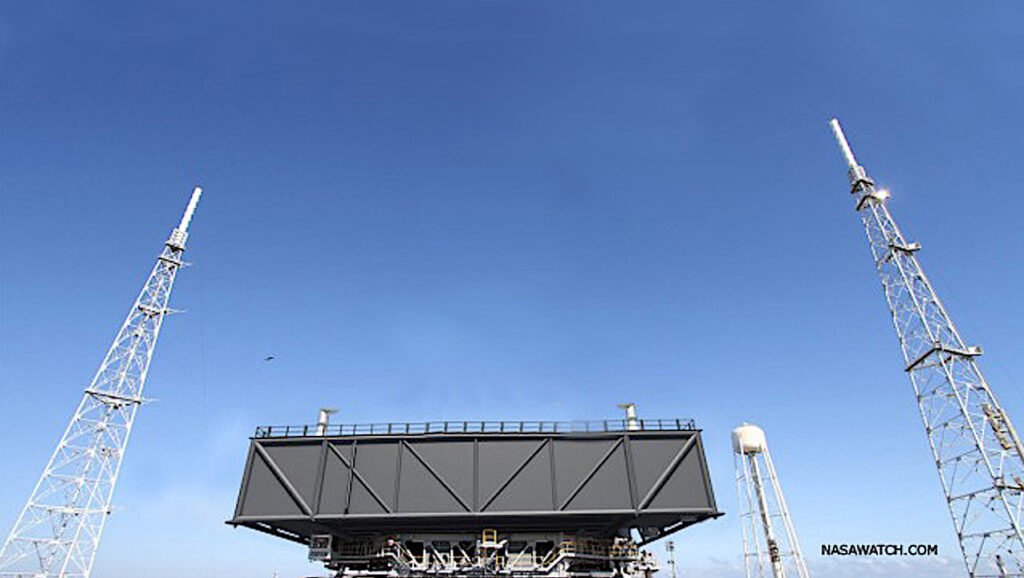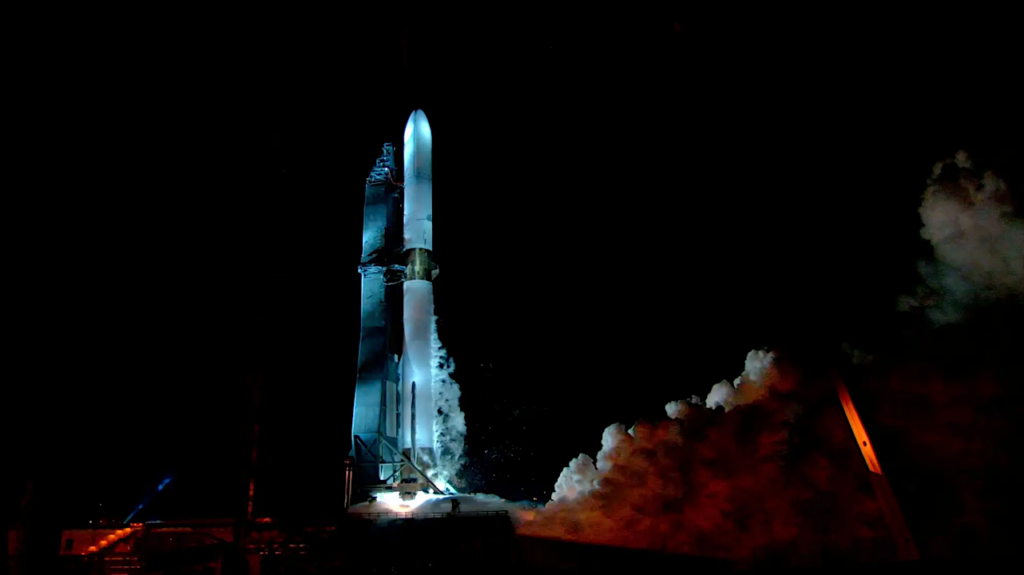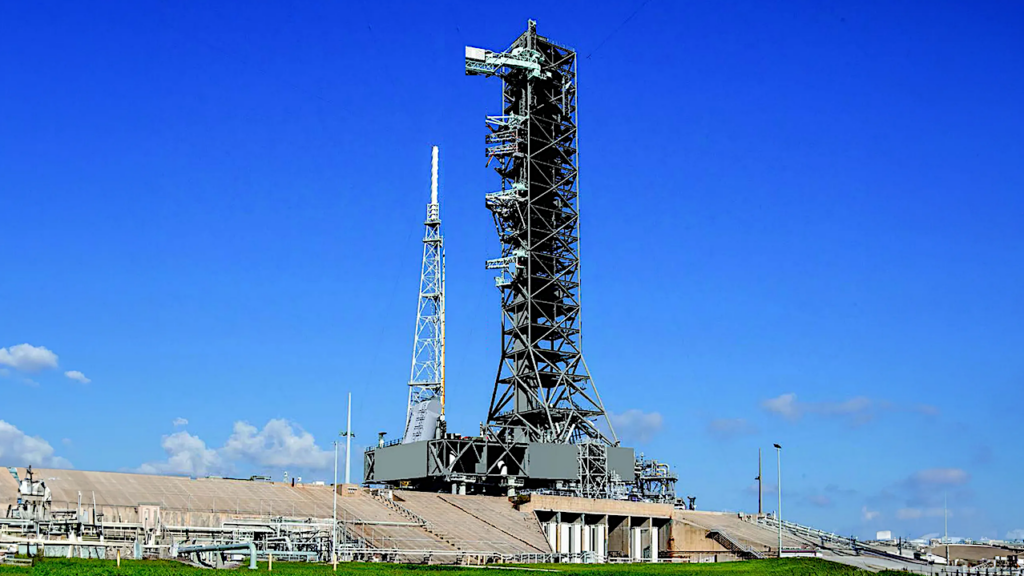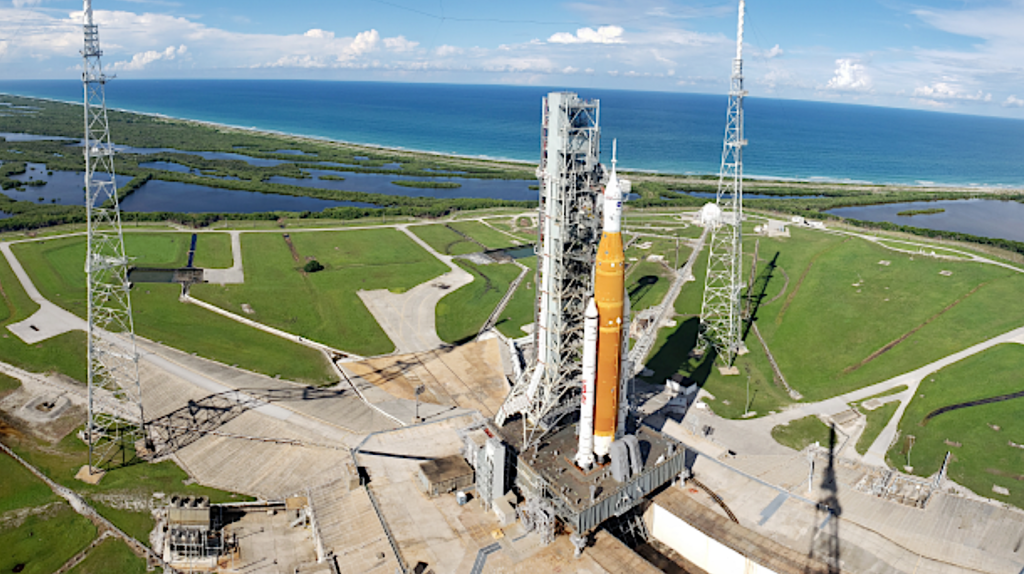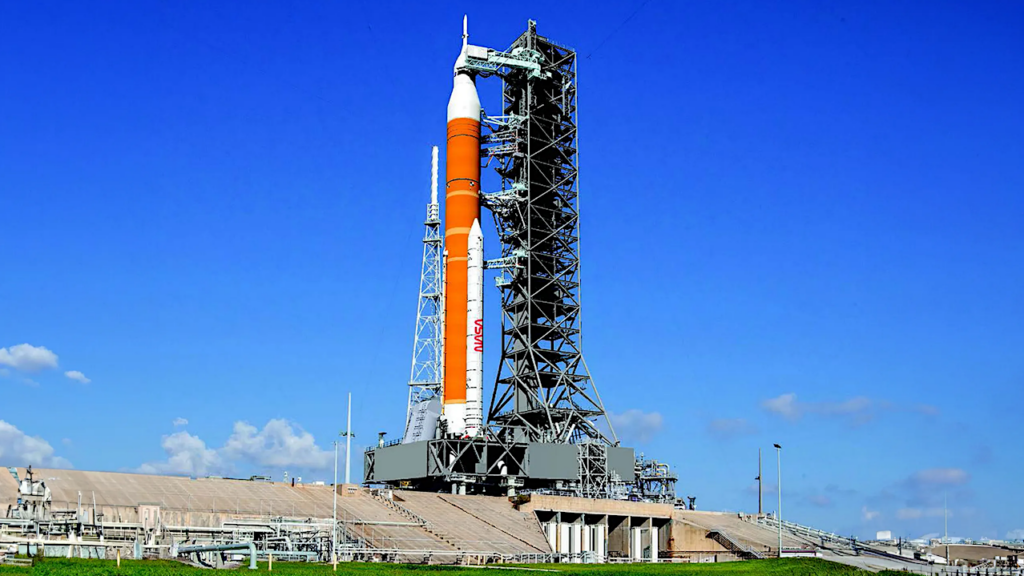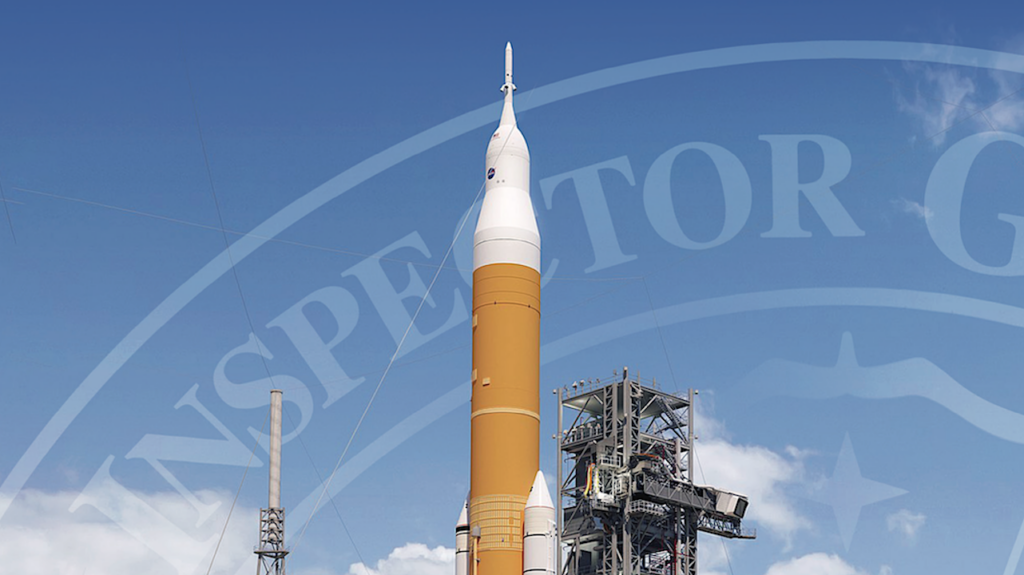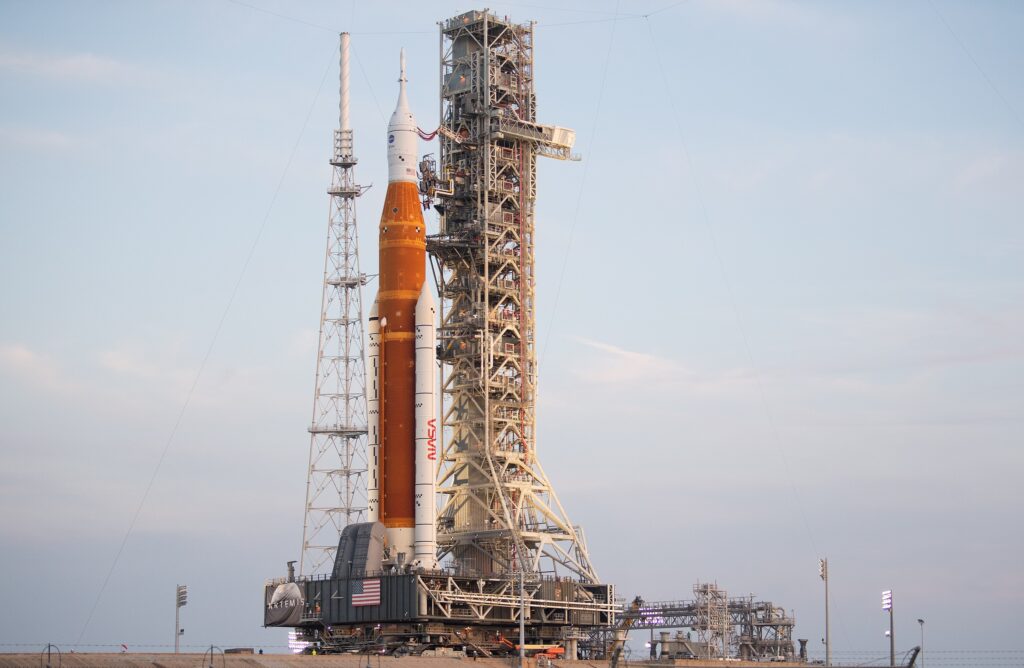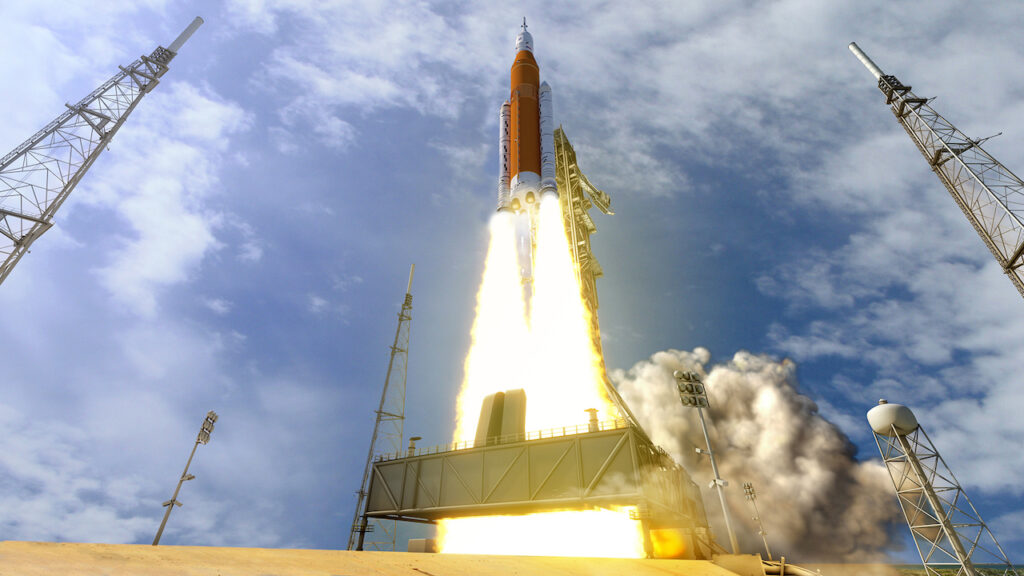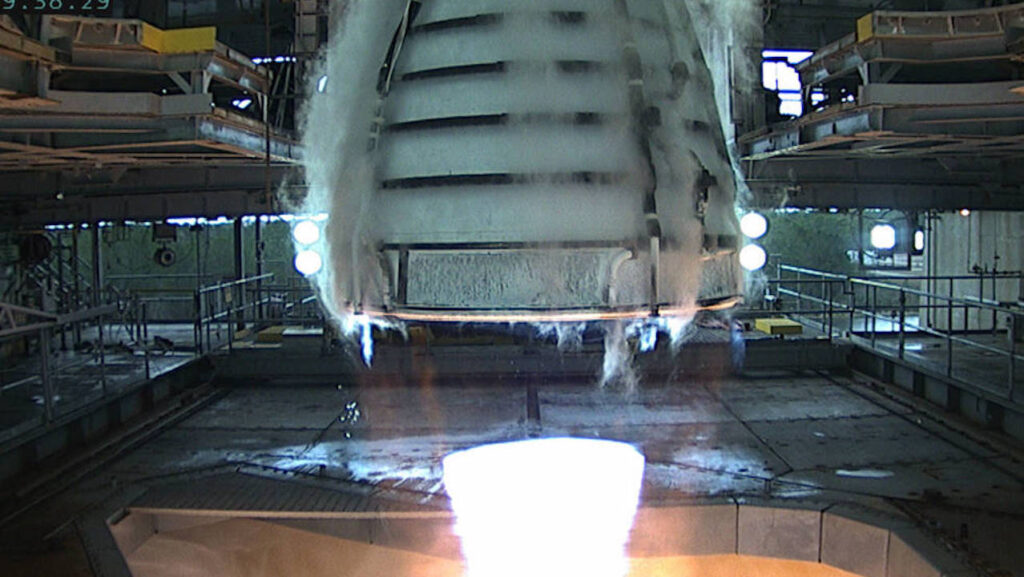Keith’s note: According to Ars Technica: “On Friday, with less than an hour’s notice, David Dutcher, Boeing’s vice president and program manager for the SLS rocket, scheduled an all-hands meeting for the approximately 800 employees working on the program. The apparently scripted meeting lasted just six minutes, and Dutcher didn’t take questions.” Oh yes: Eric Berger just update this story with a tweet saying “NASA HQ was caught completely unaware on Friday afternoon when the first stories started to appear. Boeing apparently did this to pressure lawmakers to ‘save’ SLS before the White House takes action.”
(more…)Keith’s note: According to a Blue origin posting: “New Glenn successfully completed an integrated launch vehicle hotfire test today, the final major milestone on our road to first flight. NG-1 will carry a Blue Ring Pathfinder as its first manifested payload and will launch from Launch Complex 36 in Cape Canaveral, FL.” Social media postings (as yet unconfirmed) cite a 6 January 2025 launch date target (again, unconfirmed). Soon NASA’s SLS will have two immense rockets that can out-compete it in terms of cost, performance, flight rate, and ability to be adapted and revised. And these rockets were built from scratch using 21st century experience and concepts – not a congressionally-mandated shotgun marriage of 1970s, 1980s, and early 2000’s ideas and rocket parts. Stay tuned.
(more…)Keith’s note: There is an Artemis media thing at NASA today at 1:00 pm EST. Tune in here. During the tenure of Bill Nelson at NASA the Artemis program’s schedule has slipped by several years, costs have continued to balloon out of control, and both OIG/GAO continue to point out chronically unresolved managerial and contractual issues with the whole Artemis/SLS/Orion/Gateway thing. It will be interesting to see what spin Nelson puts on this whole mess today in his exit presser – and how often he will say #SpaceIsHard.
(more…)Keith’s note: this editorial by Mike Bloomberg “NASA’s $100 Billion Moon Mission Is Going Nowhere“ certainly does not mince words. “A celestial irony is that none of this is necessary. A reusable SpaceX Starship will very likely be able to carry cargo and robots directly to the moon – no SLS, Orion, Gateway, Block 1B or ML-2 required – at a small fraction of the cost. Its successful landing of the Starship booster was a breakthrough that demonstrated how far beyond NASA it is moving.Meanwhile, NASA is canceling or postponing promising scientific programs – including the Veritas mission to Venus; the Viper lunar rover; and the NEO Surveyor telescope, intended to scan the solar system for hazardous asteroids – as Artemis consumes ever more of its budget. Taxpayers and Congress should be asking: What on Earth are we doing? And the next president should be held accountable for answers.”
(more…)“The program has made progress, but the Artemis schedule poses challenges. Artemis II and III launches (planned for September 2025 and 2026, respectively): EGS is making progress refurbishing the Mobile Launcher 1 – the structure used to transport and launch key systems – and modifying elements to support crew during these missions. New capabilities are taking longer than planned, and the program has only limited time to address potential issues. Artemis IV launch (planned for September 2028): EGS has made some progress toward this mission, such as modifying facilities to accommodate processing and launching the larger Space Launch System (SLS) Block 1B launch vehicle. However, much work remains, some of which cannot start until after the Artemis III launch.” Full report NASA Artemis Missions: Exploration Ground Systems Program Could Strengthen Schedule Decisions
(more…)Keith’s Note: When Senator Administrator Bill Nelson walked in the door at NASA they thought Mobile Launcher 2 would cost $500 million. NASA OIG now says that it will have cost $2.7 billion by the time Bechtel delivers it. Add in delays and cost overruns in the overall Artemis project and the ever slowing launch cadence between missions and you have to wonder why NASA is building something that it simply does not need and probably never did. And when OIG suggests that NASA convert this to a fixed cost contract to nail down the final costs NASA says “no”. Bill Nelson gets mad about China beating the U.S. (back) to the Moon when NASA is doing a great job of allowing that to happen. According to OIG: “NASA projects the ML-2 will cost over three times more than planned. In 2019, NASA estimated the entire ML-2 project from design through construction would cost under $500 million with construction completed and the ML-2 delivered to NASA by March 2023. In December 2023, NASA estimated the ML-2 project would cost $1.5 billion, including $1.3 billion for the Bechtel contract and $168 million for other project costs, with delivery of the launcher to NASA in November 2026. In June 2024, NASA established the Agency Baseline Commitment (ABC)—the cost and schedule baseline committed to Congress against which a project is measured—for a ML-2 project cost of $1.8 billion and a delivery date of September 2027. Even with the establishment of the ABC, NASA intends to keep Bechtel accountable to the cost and schedule agreed to in December 2023. Despite the Agency’s increased cost projections, our analysis indicates costs could be even higher due in part to the significant amount of construction work that remains. Specifically, our projections indicate the total cost could reach $2.7 billion by the time Bechtel delivers the ML-2 to NASA. With the time NASA requires after delivery to prepare the launcher, we project the ML-2 will not be ready to support a launch until spring 2029, surpassing the planned September2028 Artemis IV launch date. NASA officials disagree with our analysis and expect cost growth to lessen over time now that Bechtel has started construction of the launcher. The Agency believes this is an area of expertise for the contractor. While progress has been made with the beginning of construction of the ML-2, it is still too early to determine the impact on the contract’s continued cost growth and whether Bechtel can achieve and sustain an improved level of performance throughout the construction phase.” Full report: NASA’s Management of the Mobile Launcher 2 Project
(more…)NASA’s Management of Space Launch System Block 1B Development, NASA OIG: “Quality control issues at Michoud are largely due to the lack of a sufficient number of trained and experienced aerospace workers at Boeing. To mitigate these challenges, Boeing provides training and work orders to its employees. Considering the significant quality control deficiencies at Michoud, we found these efforts to be inadequate. For example, during our visit to Michoud in April 2023, we observed a liquid oxygen fuel tank dome – a critical component of the SLS Core Stage 3 – segregated and pending disposition on whether and how it can safely be used going forward due to welds that did not meet NASA specifications. According to NASA officials, the welding issues arose due to Boeing’s inexperienced technicians and inadequate work order planning and supervision. The lack of a trained and qualified workforce increases the risk that Boeing will continue to manufacture parts and components that do not adhere to NASA requirements and industry standards. We project SLS Block 1B costs will reach approximately $5.7 billion before the system is scheduled to launch in 2028. This is $700 million more than NASA’s 2023 Agency Baseline Commitment, which established a cost and schedule baseline at nearly $5 billion. EUS development accounts for more than half of this cost, which we estimate will increase from an initial cost of $962 million in 2017 to nearly $2.8 billion through 2028. Boeing’s delivery of the EUS to NASA has also been delayed from February 2021 to April 2027, and when combined with other factors, suggests the September 2028 Artemis IV launch date could be delayed as well. Factors contributing to these cost increases and schedule delays include redirection of EUS funds to the core stage during Artemis I production, changing Artemis mission assignments, maintaining an extended workforce 7 years more than planned, manufacturing issues, and supply chain challenges.”
(more…)Keith’s note: According to the new NASA OIG Report “NASA’s Transition of the Space Launch System to a Commercial Services Contract“ … “NASA’s ability to reduce SLS costs and negotiate a fixed-price contract with DST will be impeded by a lack of competition for heavy-lift launch services, a characteristic that historically has helped drive down costs. Further, NASA has permitted current SLS contractors to incorporate limited rights data into the design of the core stage and Exploration Upper Stage, effectively blocking other contractors from competing to build the SLS system. That said, inclusion of several Federal Acquisition Regulation provisions in EPOC such as incentive fees may assist NASA in contract negotiations, mitigate the impact to schedule and cost overruns, and ensure remaining data rights are retained to the fullest extent possible by the government. Finally, while DST intends to reduce costs by increasing economies of scale by building more SLSs, its efforts to find customers outside of NASA have been unsuccessful to date. Although the SLS is the only launch vehicle currently available that meets Artemis mission needs, in the next 3 to 5 years other human-rated commercial alternatives that are lighter, cheaper, and reusable may become available. Therefore, NASA may want to consider whether other commercial options should be a part of its mid- to long-term plans to support its ambitious space exploration goals.”
(more…)Keith’s note: According to a GAO report issued today: “Space Launch System: Cost Transparency Needed to Monitor Program Affordability“: “Because the original SLS version’s cost and schedule commitments, or baselines, were tied to the launch of Artemis I, ongoing production and other costs needed to sustain the program going forward are not monitored. Instead, NASA created a rolling 5-year estimate of production and operations costs to ensure that the costs fit within NASA’s overall budget. However, neither the estimate nor the annual budget request track costs by Artemis mission or for recurring production items. As a result, the 5-year estimate and the budget requests are poor measures of cost performance over time. In 2014, GAO recommended that NASA develop a cost baseline that captures production costs for the missions beyond Artemis I that fly SLS Block I. NASA intends to fly SLS Block I for Artemis II, planned for 2024, and Artemis III, planned for 2025. NASA partially concurred, but has not yet implemented this recommendation. A cost baseline would increase the transparency of ongoing costs associated with SLS production and provide necessary insights to monitor program affordability.” Here are More posts in the continuing saga of what SLS actually costs. As if NASA will ever actually know who much these things cost. Why start now?
(more…)Keith’s note: According to a new NASA OIG Report “NASA’s Management of the Space Launch System Booster and Engine Contracts“: “… the complexity of developing, updating, and integrating new systems along with heritage components proved to be much greater than anticipated, resulting in the completion of only 5 of 16 engines under the Adaptation contract and added scope and cost increases to the Boosters contract. … Additionally, Marshall Space Flight Center procurement officials who oversee all four contracts are challenged by inadequate staff, their lack of experience, and limited opportunities to review contract documentation. … Marshall procurement officials also encountered significant issues with the award of BPOC, the follow-on booster contract, which started as an undefinitized letter contract in which terms, specifications, and price were not agreed upon before performance began. We found NASA took 499 days to definitize the letter contract, which is far outside the 180-day federal guidance. … As a result, we question $19.8 million in award fees it received for the 11 unfinished engines which were subsequently moved to the RS-25 Restart and Production contract and may now be eligible to receive additional award fees. … Faced with continuing cost and schedule increases, NASA is undertaking efforts to make the SLS more affordable. Under the RS-25 Restart and Production contract, NASA and Aerojet Rocketdyne are projecting manufacturing cost savings of 30 percent per engine starting with production of the seventh of 24 new engines. However, those savings do not capture overhead and other costs, which we currently estimate at $2.3 billion. Moreover, NASA currently cannot track per-engine costs to assess whether they are meeting these projected saving targets.”
(more…)
